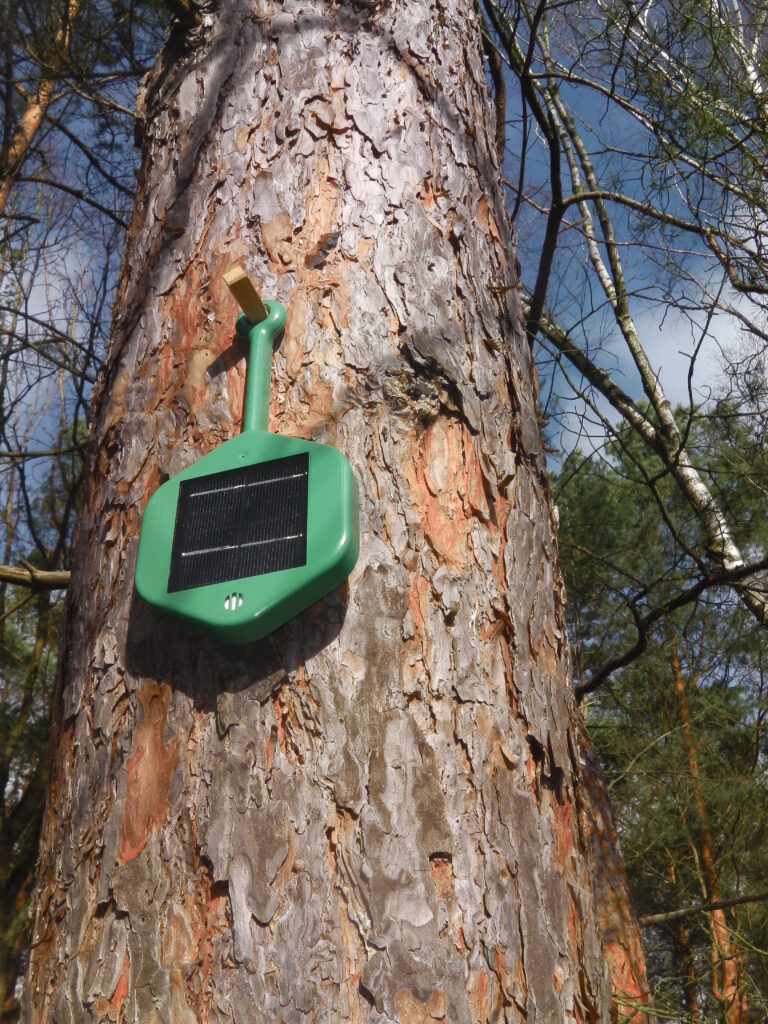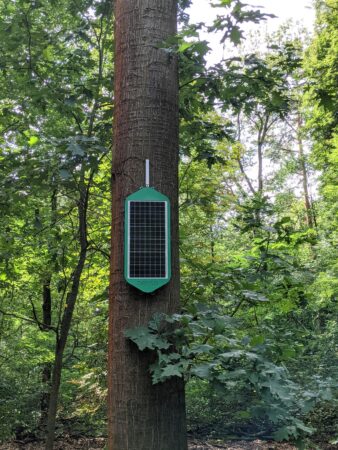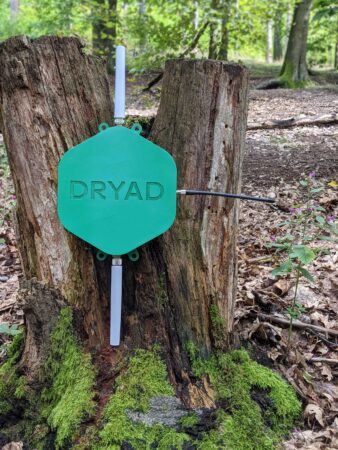
Headlines
News
Wildfires
Emergency & disaster management
New German technology aims to quickly detect wildfires
June 23, 2023
By
Elena De Luigi
 The goal is to be able to detect the fires within the first hour of ignition by building a network of sensors throughout forest that use LoRaWAN, or long-range wide area network, to communicate with a satellite and 4G LTE connection built into it. Photo supplied by Dryad
The goal is to be able to detect the fires within the first hour of ignition by building a network of sensors throughout forest that use LoRaWAN, or long-range wide area network, to communicate with a satellite and 4G LTE connection built into it. Photo supplied by Dryad June 23, 2023, Canada – As Canada continues its record-breaking wildfire season, there is a need for innovative solutions that will bring new technologies to the market.
Dryad Networks developed a sensor with an “electronic nose” that aims to detect wildfires as early as possible. These solar-powered gas sensors, which are nailed to tree trunks under the canopies, are designed to “smell” a fire even before the flames begin.
“Satellites can take hours before they detect the fire… [ground cameras] that overlook the horizon can take one, two, or three hours to detect the fire. We want to be in the first hour after someone throws a cigarette,” said Dryad’s chief executive officer, Carsten Brinkschulte.
The German company uses a large-scale IoT network of sensors to detect wildfires while providing forest insights and analytics. Dryad’s detection services are available around the globe.
Brinkschulte said this ultra-early wildfire detection allows the sensors to detect fires within two to three minutes, depending on where the fire is. Just like Wi-Fi, the farther away the sensor is from the fire, the longer it will take to detect.
However, the goal is to be able to detect the fires within the first hour of ignition by building a network of sensors throughout forest that use LoRaWAN, or long-range wide area network, to communicate with a satellite and 4G LTE connection built into it.
“We want to detect fires during the smouldering phase if possible, so that when we detect it, the firefighters can still go there (and) simply extinguish it before it becomes a catastrophe,” he said.

Photo supplied by Dryad
The wildfire sensor itself has a gas detector, a membrane and artificial intelligence built into it. The gas detector sits behind the membrane and is called the electronic nose. Brinkschulte said the sensor looks for gases like hydrogen, carbon monoxide, and volatile organic compounds at the ppm level, while machine learning allows the sensor to distinguish the different types of smells and send an alert once gas been detected.
To get the data out of the forested area, the sensors have a wireless communications radio antenna attached to each one that connects to range extenders placed every few kilometres from deep in the forest all the way out to reach the fire stations. The extenders are also solar powered and can run maintenance-free for up to 15 years, states the company website.
Currently, there are no Dryad sensors in Canada, but the California Department of Forestry and Fire Protection is trialling 400 of the company’s sensors in Jackson Demonstration State Forest.

Photo supplied by Dryad
The pilot aims to show how sensor technology can support that fire department by detecting wildfires faster and reducing destruction and the cost of fire fighting resources, states a company press release.
So far this year, more than 2,700 fires have burned more than 59,000 square kilometres of forest and other land across the country. That is more than 15 times the amount of land normally burned by this point in the year.
Annually, about 7,500 wildfires burn more than 2.5 million hectares of forest in Canada. The Canadian Space Agency has said those numbers are projected to double by 2050.
A 2022 report from the United Nations report found wildfires are becoming “more intense and more frequent.” As global warming worsens, “the need to reduce wildfire risk is more critical than ever.”
Canada is on track to pass the most area ever burned before the end of June.
Print this page
Advertisement
- Fire Fighting in Canada This Week – June 23, 2023
- P.E.I. will have civil servants ready to fight wildfires after 10 days training